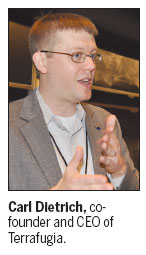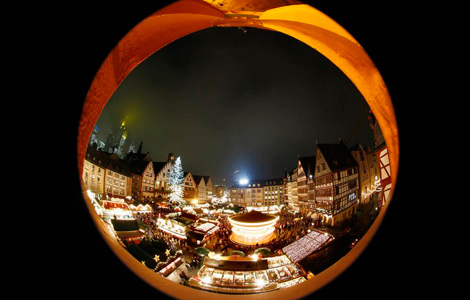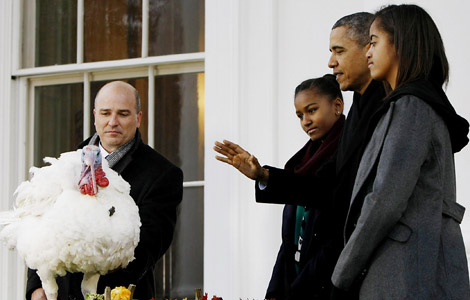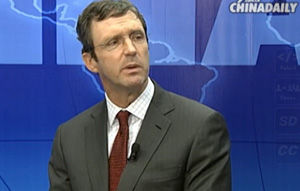Look, up in the sky, it's a bird, it's a plane, no it's... a car?
Updated: 2013-11-18 11:24
By Michael Barris (China Daily USA)
|
||||||||

On a video screen in a dark lecture hall, the future soared above green fields and glittering bays, and moved closer to reality - in the form of flying cars.
The airworthy street machines enthralled spectators and media on hand for a panel on emerging technologies that was part of the Massachusetts Institute of Technology's China Innovation and Entrepreneurship Forum over the weekend.
The Transition, the first-generation "roadable aircraft" designed by Massachusetts-based Terrafugia Inc, is designed to fit in a single-car garage, be driven on the highway, and be flown in and out of general aviation airports. Running on high octane unleaded automotive gasoline - which is cheaper and kinder to the environment than traditional aviation fuel - and converting to plane from automobile in less than a minute, it could be on the commercial market within three years, pending the completion of crash testing and final certification flight testing.
The forum also watched an animated demonstration of Terrafugia's four-seat, vertical takeoff and landing plug-in hybrid-electric flying car, the TF-X.Incorporating "intelligent" automatic flight systems, the vehicle - not expected to reach the commercial market until the next decade - would increase "the level of safety, simplicity, and convenience of personal aviation", according to the company's website.
CEO Carl Dietrich told China Daily that Terrafugia (Latin for "escape the earth") has received expressions of interest from "about a dozen groups from China". Their aim is to learn more about Terrafugia's products, as China's aviation administration issues policies aimed at increasing private investment in the civil aviation sector, a move seen as gradually opening the nation's civil aviation market to foreign investors.

The interested parties, Dietrich said, include investment funds "founded by entrepreneurs who came to the US and went back to China to create funds there", aviation companies seeking to "understand the fledging aviation market in China" and automakers that see Terrafugia's work as "a potential disruption in the long run and want to learn more about it".
While the MIT-conference panel highlighted three other provocative projects or topics - the Hyperloop system which would move riders in pods through airless tubes at 800 miles per hour, user-friendly production and research robots, and affordable, secure and environmentally friendly nuclear energy programs - it was clear that Dietrich's flying car captivated the crowd.
It's not hard to see why. From the TV cartoon show The Jetsons to the movie Back to the Future Part II, the flying car has been an exciting symbol of the (imagined) future. For this reason, Dietrich emphasizes the importance of maintaining a "realistic perspective" about the rate at which his company's new technology could be adopted.
"These things happen over the course of a generation - 30 years, not five years, or 10 years," said the CEO, who co-founded his company in 2006. That reality makes it tougher to win over investors, he said. "Most venture capital funds are not structured that way. They are looking for a seven-year fund limit or a 10-year fund limit".
Aside from its need for $30 million in new investment, Dietrich said Terrafugia, a small, privately owned company based in Woburn, outside Boston, will have its work cut out for itself addressing people's reservations about flying cars.
"When we first had cars, people had the right of way on all roads," he said. "There were movements to not allow cars to drive faster than people can walk. ... But we're at that stage now with flying cars."
Contact the writer at michaelbarris@chinadailyusa.com
(China Daily USA 11/18/2013 page2)
Most Viewed
Editor's Picks

|

|

|

|

|

|
Today's Top News
Obama calls Saudi king over Iran: White House
Biden’s China trip has broad agenda
Premier carries hectic schedule
China to be largest oil importer
Clean energy fueling the future
Ancient Chinese philosophies are eye-opening
Tencent anti-monopoly suit trial starts in Beijing
US B-52 bombers in air zone monitored
US Weekly

|

|













